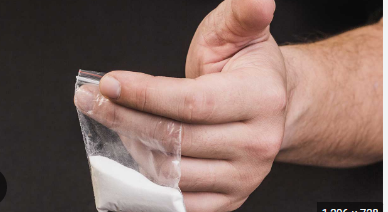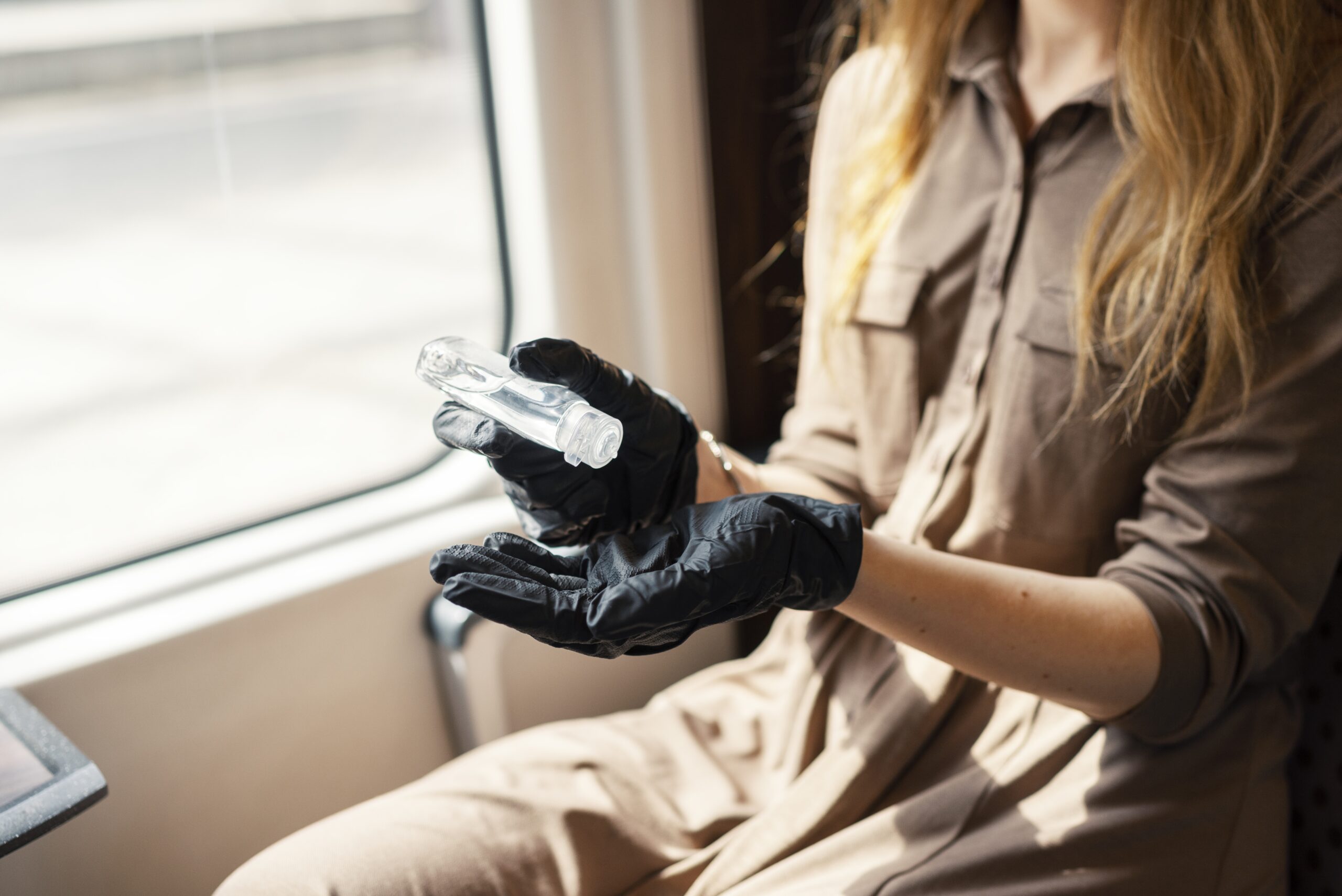Heroin Price, Purity, & Risky Effects of Addiction
Heroin addiction has a lot of costs, including friends, family, and future career goals. But what about the financial effects of heroin addiction? The price of heroin may have declined but still it is not cheap. Some people may find that they’re spending hundreds each day on the drugs to fuel their addiction, if not more. Along with the social and emotional costs of addiction, heroin addiction takes a toll on the user’s finances. Financing an addiction has direct monetary costs and a loss of future wages if the behavior impacts the user’s career prospects.
According to the US Department of Justice, the cost of heroin has declined significantly over the past few years. From an average of $2,000 per pure gram of heroin between 1979 and 1988 to the current estimated price of $500 per pure gram of heroin. That nearly a 75 percent decrease. Lower cost of heroin makes the illicit drug more affordable for new users and thus threaten to expand the user base. And the cost of heroin continues to fall with the introduction of new and more powerful synthetic opioids, such as fentanyl.
Nearly 70 percent of all drug overdose deaths in the United States in 2018 involved an opioid such as heroin. While deaths involving heroin decreased by four percent, heroin continues to pose a serious public health and safety threat. The domestic market for fentanyl overlaps with most of the major white powder heroin markets. Historically, retail level heroin distributors have mixed or “cut” heroin with adulterants such as caffeine, procaine, and lidocaine, which increased their profits and decreased their product’s purity. Adding fentanyl to heroin allows distributors to significantly increase their profits while maintaining product’s perceived quality.
How Much Does Heroin Cost?
The price of heroin varies depending on factors like purity, type, and availability.
Type of Heroin
There are three main types of heroin: white powder heroin, brown powder heroin, and black tar heroin. White powder heroin tends to cost the most, while black tar heroin tends to cost the least. That’s because black tar heroin is the least pure.
Purity of the Drug
Pure heroin usually costs more than heroin that’s been cut with additives. However, many drug dealers use additives that resemble pure heroin, such as powdered milk or flour, to trick buyers into paying more for the drug. Higher purity heroin allows users to effectively smoke or snort the drug rather than inject it.
Availability
Heroin generally costs more in areas where it’s difficult to find, which are usually rural areas. The availability of less expensive, higher purity white heroin from Southeast Asia and South America led to increased abuse over the past decade.
How Much for a Gram of Heroin?
The cost of Heroin continues to drop while potency levels rise. Black Tar Heroin and Powder Heroin continue to be cut with a range of harmful products to increase drug trafficking organizations’ profits. A “baggie” (or small, single-use bag) of Heroin typically costs between $5 and $20. The United Nations Office on Drugs and Crime (UNODC) reported the average price of Heroin in the US was $152 per gram (which is usually divided into 20 bags).
Those with a severe opioid use disorder have described purchasing 10 to 15 bags of the drug per day. Following this model of use, a person would spend between $438 and $1,750 per week and between $22,810 and $91,250 per year on the drugs, depending on heroin street prices.
Although the direct costs of heroin abuse may be clear, there are other ways heroin addiction can indirectly cause financial problems. The physical effects of hroin abuse often prevent users from completing basic tasks. Responsibilities like going to work, paying the bills, or taking care of the children could all fall through the cracks when a person’s thoughts are focused on their next fix.
If the person goes to work under the influence of heroin, they may struggle to fulfill their obligations and cause problems for the company. They could lose their job and struggle to support themselves and their family. Even if this does happen, they will most likely continue to use heroin and spend money on their addiction.
Skip To:
- Heroin Price, Purity, & Risky Effects of Addiction
- How Much Does Heroin Cost?
- How Much for a Gram of Heroin?
- Heroin Addiction Statistics
- Heroin Drug Fact Sheet
- Street Price of Heroin
- What Does Heroin Do to the Brain?
- What Does Heroin Do to the Body?
- What are the Risks of Heroin Use?
- What is Black Tar Heroin?
- Black Tar Heroin Price
- Heroin Addiction Treatment Near Me
Learn More:
Get Help. Get Better. Get Your Life Back.
Searching for Accredited Drug & Alcohol Rehab Centers Near You? Or Mental Health Support?
Even if you have failed previously, relapsed, or are in a difficult crisis, we stand ready to support you. Our trusted behavioral health specialists will not give up on you. Call us when you feel ready or want someone to speak to about therapy alternatives to change your life. Even if we cannot assist you, we will lead you wherever you can get support. There is no obligation. Call our hotline today.
FREE Addiction Hotline – Call 24/7Heroin Addiction Statistics
In 2020, heroin-involved overdose death rates decreased by nearly 7% 2019 to 2020. However, more than 13,000 people died from a drug overdose involving heroin in the United States, a rate of more than four deaths for every 100,000 Americans. The number of heroin-involved overdose deaths was nearly seven times higher in 2020 than in 1999. Almost 20% of all opioid deaths involved heroin.
626,000 Americans
Roughly 626,000 Americans had a heroin addiction in 2016
Source: NIDA
50 to 60 percent
When someone uses heroin, they have a 50 to 60 percent chance of developing an addiction.
Source: NIDA
13,000
More than 13,000 people died from a drug overdose involving heroin in the United States.
Source: NIDA
Heroin Drug Fact Sheet
Heroin
Heroin is an opioid drug made from morphine, a natural substance from the seed pod of the various opium poppy plants grown in Southeast and Southwest Asia, Mexico, and Colombia. Heroin can be a white or brown powder or a black sticky substance known as black tar heroin.
How do people use heroin?
People inject, sniff, snort, or smoke heroin. Some people mix heroin with crack cocaine, a practice called speedballing.
What are the effects of heroin?
Heroin enters the brain rapidly and binds to opioid receptors on cells located in many areas, especially those involved in feelings of pain and pleasure and in controlling heart rate, sleeping, and breathing.
Short-Term Effects
People who use heroin report feeling a “rush” (a surge of pleasure or euphoria). However, there are other common effects, including:
- dry mouth
- warm flushing of the skin
- heavy feeling in the arms and legs
- nausea and vomiting
Long-Term Effects
People who use heroin over the long term may develop the following:
- insomnia
- collapsed veins for people who inject the drug
- damaged tissue inside the nose for people who sniff or snort it
- infection of the heart lining and valves
- abscesses (swollen tissue filled with pus)
- constipation and stomach cramping
- liver and kidney disease
Street Price of Heroin
The price of heroin depends on some different factors. First, the type of heroin, as well as the overall availability on the streets, and also how the heroin is processed and cut. The purer the heroin, generally the more expensive, but it’s not hard to sell something and say it’s pure, and then it’s laced with other substances.
A Bag of Heroin Price
A single-use bag, or “baggie”, of heroin can cost anywhere between $5 and $20. People with severe addictions to heroin can go through 10 to 15 bags per day.
A Gram of Heroin Price
In the United States, a typical gram of heroin costs around $150. This can be cut up to 20 times and sold as individual-use baggies. Currently, a gram of top-quality heroin can sell for up to $500 on the black market.
A Kilogram of Heroin Price
How much does a kilo of heroin cost? The wholesale price of a kilo of black tar heroin in the U.S. ranges between $10,000 to $100,000.


Get Your Life Back
Find Hope & Recovery. Get Safe Comfortable Detox, Addiction Rehab & Mental Health Dual Diagnosis High-Quality Care at the We Level Up Treatment Centers Network.
Hotline (877) 378-4154What Does Heroin Do to the Brain?
Research further shows that heroin abuse can lead to a deterioration of the white matter in the brain, which can directly affect decision-making capabilities, the ability to control behavior, and methods of responding to stress. Changes to the brain can also predispose it to a greater likelihood of relapse. Research shows that even after achieving sobriety, a person with a history of heroin abuse may be more likely to take up heroin again than those who do not have a history of such abuse.
Heroin abuse among women has been linked to infertility and disruptions to menstrual cycles. In some cases, pregnant women who use heroin have experienced spontaneous miscarriages. Women who continue their pregnancies may give birth prematurely, and infants may have a low birth weight or be born addicted to heroin. Regarding sexual function, women and men may experience diminished sexual drives. Men may experience erectile dysfunction and the inability to regain sexual interest on a long-term basis.
Comfortable Facilities & Amenities
High-Quality Addiction & Mental Health Rehabilitation Treatment
Rehab Centers TourRenowned Addiction Centers. Serene Private Facilities. Inpatient rehab programs vary.
Addiction Helpline (877) 378-4154Proven recovery success experience, backed by a Team w/ History of:
15+
Years of Unified Experience
100s
5-Star Reviews Across Our Centers
10K
Recovery Success Stories Across Our Network
- Low Patient to Therapist Ratio
- Onsite Medical Detox Center
- Comprehensive Dual-Diagnosis Treatment
- Complimentary Family & Alumni Programs
- Coaching, Recovery & Personal Development Events
What Does Heroin Do to the Body?
It is impossible to know from appearance alone whether someone is using heroin. However, heroin use can sometimes cause changes in someone’s physical appearance. Someone who is addicted to heroin may experience weight loss. Their pupils may also be smaller than usual, sometimes called “pinpoint” pupils.
Additionally, this person may become less concerned with their physical appearance and hygiene or appear more disheveled, but this is not always the case. A user who shoots heroin may have scars on their body to indicate injection histories, such as on their arms or legs. In severe cases, these injection sites may become infected or cause abscesses to form.

What are the Risks of Heroin Use?
Most people know that Heroin is one of the most dangerous drugs because of its addictive potential. There are also short and long-term effects of the drug, as well as indirect risks that can be life-threatening. The side effects of heroin use get worse over time. The longer someone uses the drug, the more destruction heroin can wreak on the immune system and internal organs. The risk for getting both communicable and noncommunicable diseases increases. Prolonged heroin abuse can also lead to lung, heart, and liver disease.
The most common effects of heroin abuse include:
- Respiratory problems, including pneumonia, depressed breathing, and other pulmonary diseases
- Infection by bloodborne pathogens, leading to chronic conditions such as HIV/AIDS and hepatitis
- Infection at the injection site
- Necrotizing fasciitis, a fast-moving, fatal infection that kills tissue it encounters
- Decreased ability to care for oneself as obtaining, using, and recovering from heroin use takes over life
- Cardiac complications: pericarditis, endocarditis, atherosclerosis
- Complications from additives to the heroin, which can cause blood clots to form in the arteries or veins and allow it to travel to heart, causing heart attack, stroke, or pulmonary embolism
- Coma
- Overdose and death
World-class, Accredited, 5-Star Reviewed, Effective Addiction & Mental Health Programs. Complete Behavioral Health Inpatient Rehab, Detox plus Co-occuring Disorders Therapy.
CALL (877) 378-4154End the Addiction Pain. End the Emotional Rollercoaster. Get Your Life Back. Start Drug, Alcohol & Dual Diagnosis Mental Health Treatment Now. Get Free No-obligation Guidance by Substance Abuse Specialists Who Understand Addiction & Mental Health Recovery & Know How to Help.
What is Black Tar Heroin?
Black tar heroin is a black, sticky form of heroin. It’s almost the same in consistency and appearance to roofing tar, which is where it gets the name. On the street, it’s simply known as black tar, black pearls, or Mexican mud. Its consistency makes it hard to inject, so some black tar heroin users dilute it with liquid and heat it for injection. Others will smoke it on foil. The black tar form of heroin is also sometimes taken by mixing it with hot water and squirting it into the nose. This method is sometimes called monkey water, waterloo, water lining, or shebang.
Black tar heroin is usually cheaper than white powdered heroin because of the quicker, less refined process of manufacturing it. The purity of black tar is estimated to be around 30% in general, but it’s impossible to know exact purity or strength because of the way it’s cut with other substances. Black tar heroin is just as dangerous as other types of heroin.
Black Tar Heroin Price
There are three main types of heroin: white powder heroin, brown powder heroin, and black tar heroin. White powder heroin tends to cost the most, while black tar heroin tends to cost the least. That’s because black tar heroin is the least pure.
In November of 2020, the U.S. Border Patrol agents assigned to the Interstate Highway 35 checkpoint defeated an attempt to smuggle black tar heroin north of Laredo. They had a total weight of 45.68 pounds with an approximate street value of $3,920,224. Based on this report by the US Customs and Border Protection (CBP), the cost of black tar heroin is approximately $190 per gram.
Studies report that 80% of people addicted to Heroin once started by using a prescription Opioid. After they’ve grown addicted and their prescription has run out, many purchase the drug illicitly. After desperation sets in, they will turn to Heroin, a cheaper and more potent alternative. Black Tar Heroin is generally relatively cheap and easy to locate in the Central and Western United States.

Experience Transformative Recovery at the We Level Up Treatment Center.
See our authentic success stories. Get inspired. Get the help you deserve.



Start a New Life
Begin with a free call to an addiction & behavioral health treatment advisor. Learn more about our dual-diagnosis programs. The We Level Up treatment center network delivers various recovery programs at each treatment facility. Call to learn more.
- Personalized Care
- Caring Accountable Staff
- Comfortable Amenities
- Licensed & Accredited
- Renowned w/ 5-Star Reviews
We’ll Call You
Heroin Addiction Treatment Near Me
Heroin addiction is a chronic disease and should be treated like other chronic diseases. Like those, it should constantly be monitored and managed. Heroin is a type of opioid. Opioid addiction treatment is different for each individual. The main purpose of opioid addiction treatment is to help the person stop using the drug. Opioid addiction treatment can also help the person avoid using it again.
The body goes through specific symptom stages known as the opiate withdrawal. The opiate withdrawal timeline varies from a few days to a few weeks, depending on the type of opioid used, how long it was used, and any other substances that may have been used in conjunction with opioids. Medically managed withdrawal opiate detox ensures the individual remains safe and stays as comfortable as possible.
Heroin Detox Treatment
The first step in treatment is medical detox. It will help you navigate the complicated withdrawal process but doesn’t address patterns of thought and behavior contributing to heroin addiction. Various treatment approaches and settings can help provide the ongoing support necessary to maintain long-term sobriety after you complete detox.
Cravings are very common during detox and can be challenging to overcome. This often leads to relapse. Constant medical care provided during inpatient treatment helps prevent relapse. Clinicians can give necessary medication and medical expertise to lessen cravings and the effects of withdrawals.
Heroin Withdrawal Treatment Inpatient
There isn’t one treatment approach or style that will suit everyone. Treatment should speak to the needs of the individual. Inpatient drug rehab and addiction treatment aren’t just about drug or alcohol use. the goal is to help the person stop using drugs like heroin. Drug and alcohol rehab should also focus on the whole person’s needs.
Addiction is a complex but treatable disease that affects brain function and behavior. When someone or their family is considering different treatment facilities, they should account for the complexity of addiction and the needs of the individual. The objective of attending an inpatient drug and alcohol rehab center for addiction treatment is to stop using the drug and re-learn how to live a productive life without it.
Most people benefit from inpatient rehab after a full medical detox from drugs and alcohol. Inpatient drug rehab can last anywhere from 28 days to several months. Patients stay overnight in the rehab facility and participate in intensive treatment programs and therapy. Once someone completes rehab, their addiction treatment team will create an aftercare program, including continuing therapy and participation in a 12-step program like Alcoholics Anonymous and Narcotics Anonymous.
Psychotherapy
Many rehab programs will also have early morning classes or programs. Group sessions occur during inpatient rehab, as do individual therapy sessions. Family therapy may be part of inpatient rehab when it’s feasible. Alternative forms of therapy may be introduced during inpatient rehab, like a holistic therapy program, yoga for addiction recovery, or addiction treatment massage therapy.
Several different modalities of psychotherapy have been used in the treatment of mental health disorders along with addiction, including:
- Cognitive Behavioral Therapy (CBT) – is an effective treatment that involves changing both the patterns of negative thoughts and the behavioral routines which are affecting the daily life of the depressed person for various forms of depression.
- Dialectical Behavioral Therapy (DBT) – is a comprehensive mental health and substance abuse treatment program whose ultimate goal is to aid patients in their efforts to build a life worth living. The main goal of DBT is to help a person develop what is referred to as a “clear mind.”
- Solution-focused therapy is an approach interested in solutions that can be quickly implemented with a simple first step leading to further positive consequences.
Dual Diagnosis Treatment
Drug abuse and mental health disorders often co-occur. In many cases, traumatic experiences can result in a mental health disorder and substance abuse. Dual diagnosis rehabilitation treats both of these issues together. The best approach for the treatment of dual diagnosis is an integrated system. This strategy treats both the substance abuse problem and the mental disorder simultaneously. Regardless of which diagnosis (mental health or substance abuse problem) came first, long-term recovery will depend mainly on the treatment for both diseases done by the same team or provider.

Medication Assisted Treatments (MAT)
Medication-Assisted Treatments (MAT) for substance use and mental health disorders are commonly used in conjunction with one another. This includes the use of medications and other medical procedures. During your rehab, the staff from your treatment facility will help you identify what caused your addiction and teach you skills that will help you change your behavior patterns and challenge the negative thoughts that led to your addiction. Sometimes, the pressures and problems in your life lead you to rely on substances to help you forget about them momentarily.
Please, do not try to detox on your own. The detox process can be painful and difficult without medical assistance. However, getting through the detox process is crucial for continued treatment. We Level Up provide proper care with round-the-clock medical staff to assist your recovery through our opioid addiction treatment program medically. So, reclaim your life, and call us to speak with one of our treatment specialists. Our counselors know what you are going through and will answer any of your questions.
Heroin Addiction Treatment Recovery Story To Sobriety
Lorraine shares her personal Heroin Addiction Treatment Recovery Testimonial Video.
In the video, Lorraine is open and honest about her experience with heroin addiction treatment and her own road to recovery.
Does Heroin Addiction Treatment Work?
The good news is that most people with a substance use disorder can benefit from some type of professional therapy, no matter how terrible their addiction may be. Approximately 80% of individuals who complete drug and alcohol rehab report an improvement in their health and quality of life.
Search We Level Up “Heroin Price” Topics & Resources
Sources
[1] Heroin – Texas Drug Threat Assessment (justice.gov)
[2] COVID-19 causes some illegal drug prices to surge, as supplies are disrupted worldwide | UN News
[3] Afghanistan: Opium cultivation up nearly a third, warns UNODC | UN News
[4] National Drug Threat Assessment_WEB.pdf
[5] Heroin – StatPearls – NCBI Bookshelf (nih.gov)
[6] Withdrawal Symptoms of Heroin and Effective Treatment Options (welevelup.com)
[7] Understanding the Opioid Overdose Epidemic | Opioids | CDC
[8] Overdose Death Rates | National Institute on Drug Abuse (NIDA) (nih.gov)





